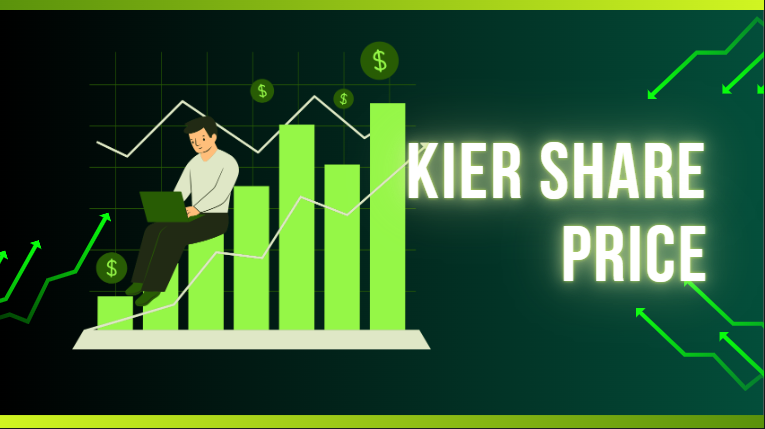Kier Share Price An In-Depth Analysis
Kier Group plc is a prominent British construction and infrastructure services company with a history dating back to the 1920s. Its share price, like many in the construction industry, is influenced by various market forces, including economic cycles, government spending, and company-specific factors. This article provides a comprehensive overview of Kier share price, factors influencing it, recent trends, and future projections.
Overview of Kier Group
Kier Group is involved in a wide array of services, including construction, infrastructure development, and housing maintenance. As a major player in the UK’s construction and civil engineering sectors, the company has been responsible for high-profile projects, including transport infrastructure, commercial buildings, and residential developments. Kier operates in both the public and private sectors, with clients ranging from government departments to private corporations.
Read Also : Heinz Tomato ketchup clear
Kier share price Macroeconomic Environment
The construction industry is closely tied to the broader economy, making Kier’s share price sensitive to macroeconomic changes. During periods of economic growth, increased investment in infrastructure and construction projects boosts the company’s revenues and profitability, which tends to have a positive impact on its share price. Conversely, during economic downturns, such as recessions, construction Kier share price projects often slow down, reducing the company’s income and putting downward pressure on the stock price.
Kier share price Government Policy and Spending
As a contractor for government projects, Kier’s share price is often affected by public sector investment in infrastructure. Government policies related to housing, transport, and urban development are critical drivers of demand for construction services. Large-scale infrastructure projects, like HS2 or improvements to road networks, can significantly influence the company’s financial performance and, in turn, its stock price.
Company Performance and Financial Health
Kier’s financial results, including revenue growth, profitability, and debt levels, play a central role in determining its share price. Investors keep a close eye on the company’s earnings reports to gauge its financial health. If the company meets or exceeds market expectations, the share price typically rises. On the other hand, disappointing results or poor management decisions can lead to a decline in stock value.In recent years, Kier has faced challenges related to its debt burden and profitability. High levels of debt and cash flow constraints have raised concerns among investors, negatively impacting its share price at various points.
Market Sentiment and Investor Confidence
The sentiment of institutional and retail investors plays a crucial role in the price of Kier shares. Investor confidence in the company’s leadership, strategic decisions, and its ability to secure new contracts can influence the stock. Moreover, changes in the construction sector or concerns about the financial stability of the broader market can lead to volatility in Kier’s share price, even if the company itself is performing well operationally.
Recent Trends in Kier Share Price
In the past decade, Kier share price has experienced significant volatility. This can largely be attributed to a combination of internal challenges and external market factors.
Kier share price Debt and Restructuring Challenges
Kier has struggled with a high level of debt in recent years, which has weighed on its share price. The company embarked on several restructuring initiatives to reduce debt and streamline its operations, but these efforts have taken time to bear fruit. At its lowest point, in 2019, Kier’s share price dropped to levels not seen since the early 2000s, as investors were concerned about the company’s financial viability.
Kier share price Impact of the COVID-19
Like many companies in the construction industry, Kier was impacted by the COVID-19 pandemic. While construction activity was deemed essential and allowed to continue during lockdowns, the overall economic uncertainty and project delays caused disruptions to Kier’s operations. The pandemic added to existing pressures on the company’s share price, which fell in response to reduced investor confidence during the global health crisis.
Recovery and Strategic Turnaround
In recent years, Kier has implemented a strategic turnaround plan that focuses on strengthening its balance sheet and improving operational efficiency. By selling non-core assets and focusing on more profitable contracts, the company has managed to reduce its debt burden, a move that has been welcomed by the market. As of 2023, Kier’s share price has shown signs of recovery, reflecting growing investor confidence in the company’s long-term prospects.
Future Projections for Kier Share Price
The future outlook for Kier Group’s share price will depend on several key factors. First, the company’s ability to continue reducing its debt and maintain profitability will be critical in determining its stock performance. Investors are likely to closely monitor Kier’s progress on its turnaround strategy and any further announcements related to its financial health.Second, government infrastructure spending is expected to remain strong in the UK, with initiatives such as the decarbonization of the economy and investments in transport networks creating opportunities for Kier. These could provide a solid foundation for revenue growth, potentially boosting the company’s share price in the medium to long term.
Kier share price economic factors
Kier Group’s share price has seen its fair share of volatility in recent years, driven by internal challenges and external economic factors. While the company has made strides in addressing its debt and operational issues, its future stock performance will depend heavily on ongoing financial improvements and external market conditions. For investors, Kier presents both opportunities and risks, particularly as the UK construction sector continues to navigate an uncertain economic landscape.



